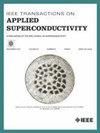过渡边缘传感器用电镀铋的退火诱导电导率增强
IF 1.8
3区 物理与天体物理
Q3 ENGINEERING, ELECTRICAL & ELECTRONIC
引用次数: 0
摘要
过渡边缘传感器(TESs)作为一种灵敏的低温超导探测器,在硬x射线探测中得到了越来越多的应用,促使人们对合适的吸收材料进行了广泛的研究。铋(Bi)具有比热容低、导热性好、量子效率高、易于微加工等优点,已成为硬x射线探测的理想材料。先前的研究表明,与蒸发方法相比,电镀通常在Bi薄膜中产生更大的晶粒尺寸,有效地减轻了能量捕获事件。此外,也有报道说,退火可以提高铋的导热性。在这项研究中,我们在140纳米的金(Au)种子层上电镀了5-$\mu$m的Bi薄膜,并对不同时间退火的样品进行了分析。结果表明,在230 $^{\circ}$C温度下退火数小时,可使吸收剂的Bi晶粒尺寸增大3 ~ 4倍,使吸收剂的残余电阻率提高近3倍。这一发现将有助于我们了解电镀铋退火膜的性能,并为未来x射线超导TES的微加工和优化提供指导。本文章由计算机程序翻译,如有差异,请以英文原文为准。
Annealing-Induced Conductivity Enhancement of Electroplated Bismuth for Transition-Edge Sensors
Transition-edge sensors (TESs) as a sensitive low-temperature superconducting detector have gained increasing popularity in hard X-ray detection applications, prompting extensive research on suitable absorber materials. Bismuth (Bi) has emerged as a promising candidate for hard X-ray detection due to its low specific heat capacity, good thermal conductivity, high quantum efficiency, and easiness to be handled with microfabrication methods. Previous studies have demonstrated that electroplating generally yields larger grain sizes in the Bi films compared to evaporation methods, effectively mitigating energy trapping events. Furthermore, there have also been reports that annealing improves the thermal conductivity of Bi. In this study, we electroplate 5-$\mu$ $^{\circ }$
求助全文
通过发布文献求助,成功后即可免费获取论文全文。
去求助
来源期刊

IEEE Transactions on Applied Superconductivity
工程技术-工程:电子与电气
CiteScore
3.50
自引率
33.30%
发文量
650
审稿时长
2.3 months
期刊介绍:
IEEE Transactions on Applied Superconductivity (TAS) contains articles on the applications of superconductivity and other relevant technology. Electronic applications include analog and digital circuits employing thin films and active devices such as Josephson junctions. Large scale applications include magnets for power applications such as motors and generators, for magnetic resonance, for accelerators, and cable applications such as power transmission.
 求助内容:
求助内容: 应助结果提醒方式:
应助结果提醒方式:


